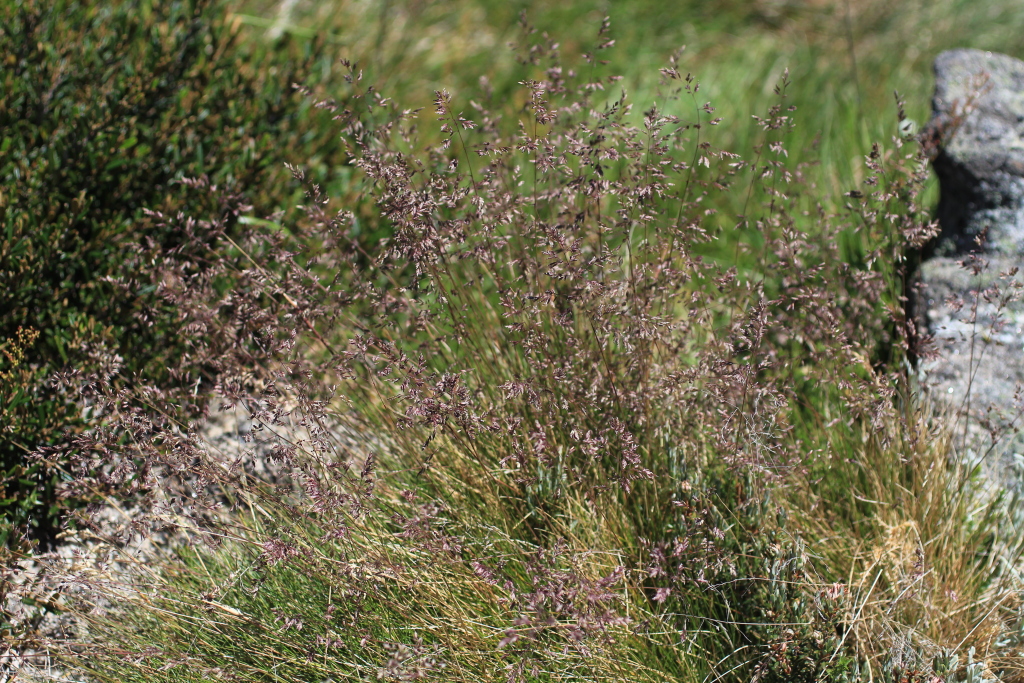Poa hiemata
Vickery Soft Snow-grassTufted or shortly and obliquely rhizomatous, glabrous perennial, culms erect, to c. 60 cm high. Leaves smooth and soft; sheath pale, rarely tinged purple; blade inrolled, terete or slightly angular, mostly to c. 25(–c. 50) cm long and 0.5 mm diam., smooth, bright green or rarely slightly glaucous; ligule truncate, firmly membranous, c. 0.5 mm long. Inflorescence commonly somewhat contracted, occasionally pyramidal with widely spreading branches, to 12 cm long and 8 cm wide. Spikelets 3–5-flowered, 3–5 mm long, green or purplish; glumes 3-nerved, 2–3 mm long, the upper slightly longer than the lower, entirely smooth or scabrous along keel; lemma 5-nerved, 2–3.5 mm long, shortly pubescent all over in the lower half; web absent or weakly developed. Flowers Dec.–Feb.
VVP, CVU, EGU, WPro, HSF, HNF, MonT, VAlp. Also NSW, Tas. A common or dominant component of moist grasslands almost throughout the alpine area (e.g. Lake Mountain, Baw Baws, Mt Useful, Snowy Range, Bogong High Plains, Cobberas Mtns etc.).
In her revision of Poa in Australia, Vickery (1970) cites two specimens from Mt Oberon (Wilsons Promontory) with the comment `morphologically indistinguishable from P. hiemata though the locality is somewhat surprising'. No specimens of P. hiemata from Mt Oberon exist at MEL and further collections are required to confirm its occurrence at such a low altitude (below 800 m).
Walsh, N.G. (1994). Poaceae. In: Walsh, N.G.; Entwisle, T.J., Flora of Victoria Vol. 2, Ferns and Allied Plants, Conifers and Monocotyledons, pp. 356–627. Inkata Press, Melbourne.
 Spinning
Spinning

